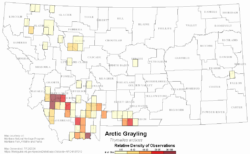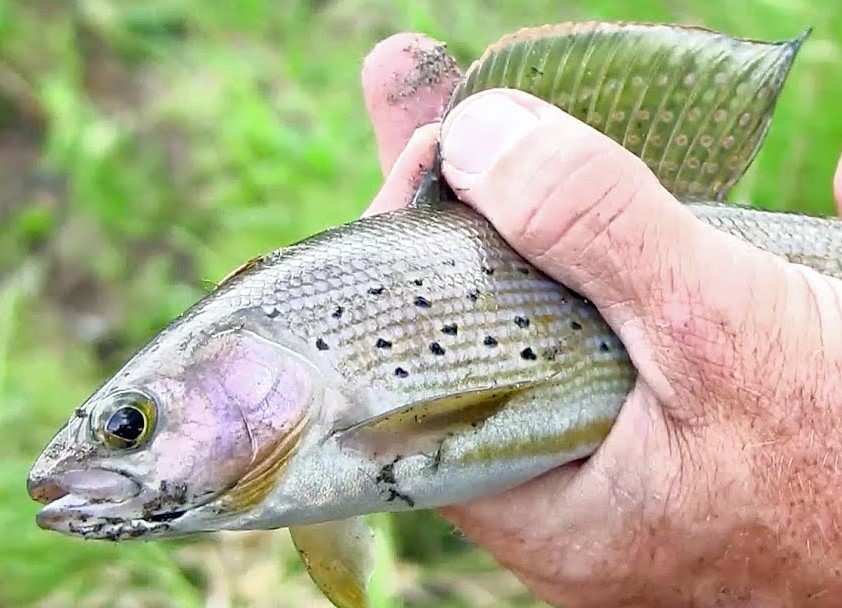 Montana Grayling are fading away. This once unique fish is dealing with warmer waters, competition from other species, and lack of habitat.
Montana Grayling are fading away. This once unique fish is dealing with warmer waters, competition from other species, and lack of habitat.
Artic Grayling are known for their massive colorful and iridescent dorsal fin. I remember catching my first 15-inch Grayling under the Madison Junction bridge in Yellowstone Park. It was in the late 1960’s and as a kid, I was using a cheese ball for bait, with an old Airex spinning reel and a fiberglass rod. We ate this fish for dinner along with a limit of brown and rainbows. The Grayling was very boney and not my favorite eater.
They once were abundant throughout the Missouri River watershed. They have been challenged for decades. In Hyalite Lake, I catch a couple each ice fishing season. One was bigger than the state record, but the law requires them to be released. I also had a day along the lower Madison when I caught a Grand Slam. This means a Brown, Cuttie, Rainbow, Graying, and Whitefish all on the same day! All were within 100 yards of the river. I also netted 4 Grayling that same day. My guess is they may have been stocked. All were over ten inches long.
Local wildlife groups are trying to gain Federal Protections for this special fish. There is a chance that the fish will fall under the Protection of the Endangered Species Act. This was first addressed in 1982 when a survey revealed declining numbers of grayling and areas that had become devoid of Grayling.
Grayling still swim in the Big Hole, Centennial Valley, Madison River, Ruby River, and several high mountain lakes. They are also abundant in several Yellowstone Park lakes. I have had days when I caught a few dozen grayling but rarely have they been very big.
Efforts to support Grayling have been ongoing. Private landowners have worked to improve habitat, remove migration barriers, improve stream flow, and create spawning sites. The state has stocked wild offspring to reestablish or boost Grayling populations.
Limited data supports the need for protection. Evolution and changing/warming climate change certainly does not help. Healthy Artic Grayling populations can still abundant in Alaska and Canada.
We need to protect what we can and get grayling back into the green.
Montana Grant





